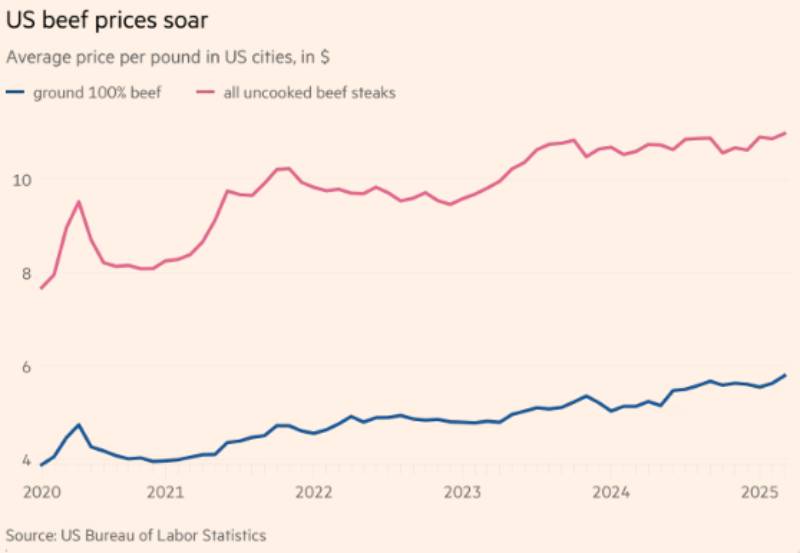Beef prices in the United States are surging to record levels as the country’s cattle inventory falls to its lowest point in more than 70 years.
According to data from the U.S. Department of Labor, the average price of ground beef rose to $5.79 per pound (0.454 kg) in American cities in March, marking a 12.8% increase over the past year and the highest annual rise on record.
A years-long drought in the western U.S. has dried up grazing pastures, prompting American ranchers to continuously shrink their herds. This has created a shortage, pushing up prices for calves and other beef products. Labor and insurance costs have also risen, and although cattle are now reaching heavier weights than ever before, it’s still not enough to offset the steep decline in herd size.

“Beef is going through the most challenging market conditions we’ve ever seen,” said Donnie King, CEO of Tyson Foods, the largest meat packing company in the U.S.
Tyson Foods reported that its customers have started switching to lower-grade meats or more affordable alternatives such as chicken, as the average price of its beef products rose by 8.2% from February to April alone.
While rising prices have put pressure on meat packing companies—who are now paying more for raw materials—this trend has benefited cattle ranchers, who are already facing financial strain from increasing livestock feed and care costs.
“My neighbor is going to sell off his entire herd next week—not because of the drought or input costs, but because the prices are good,” said Carl Ray Polk Jr., President of the Texas & Southwestern Cattle Raisers Association. “They’re taking advantage of the market, just like we would with a retirement account or any other investment. When the market is strong, you take some profits.”
However, this prolonged trend could delay the rebuilding of the U.S. cattle herd enough to keep retail beef prices elevated.
“High cattle prices, combined with rising interest rates, may make it very expensive for ranchers to rebuild their herds,” Polk added. It takes up to 42 months to raise a steer for slaughter, meaning calves born this month won’t be ready for processing until the fall of 2028.
David Anderson, a livestock economist at Texas A&M University, noted that a meaningful price decline is unlikely. “The herd rebuilding process may be beginning, but it hasn’t really gained momentum yet,” he said.
— Hạc Hiên
Source: tinnhanhchungkhoan.vn
